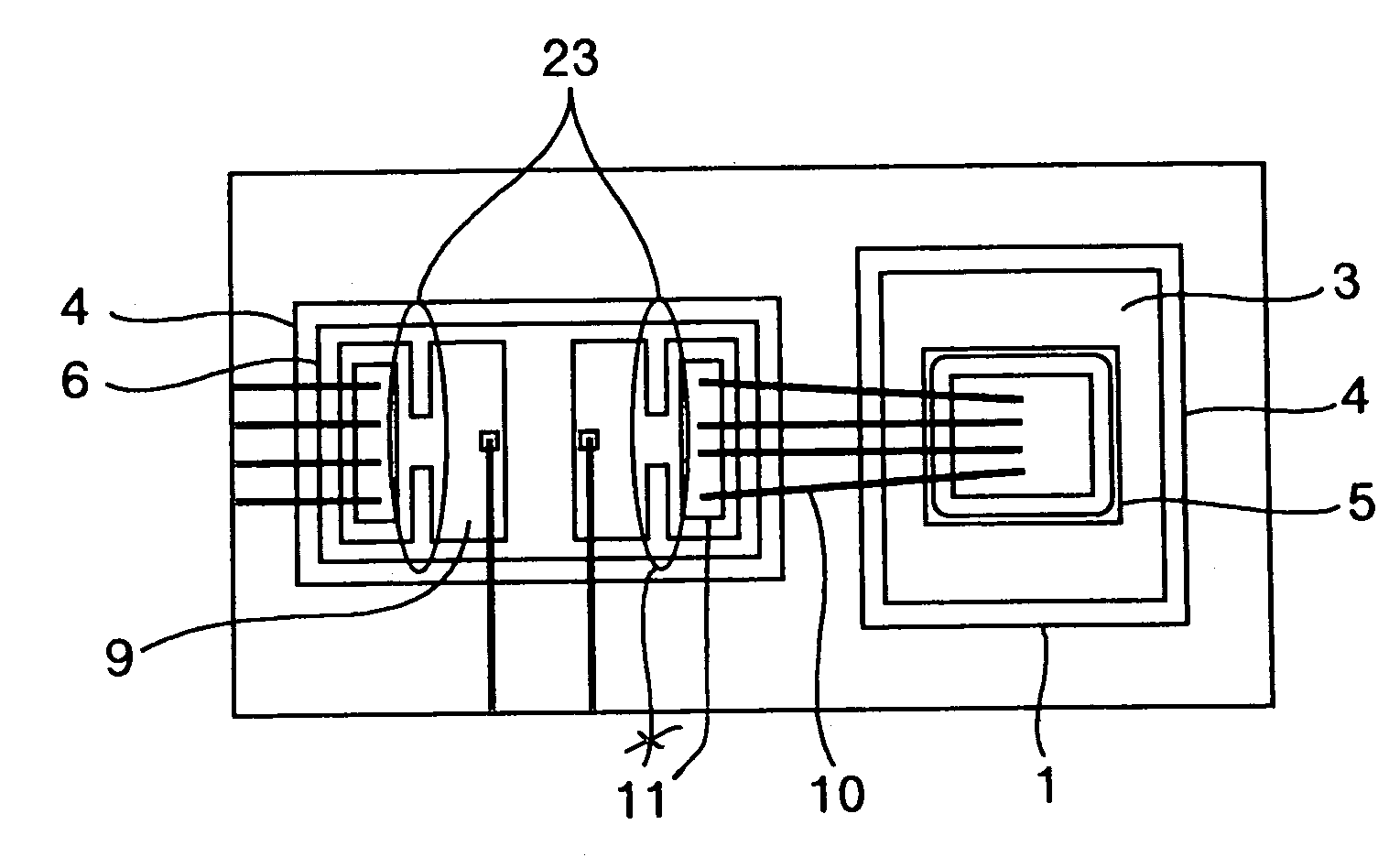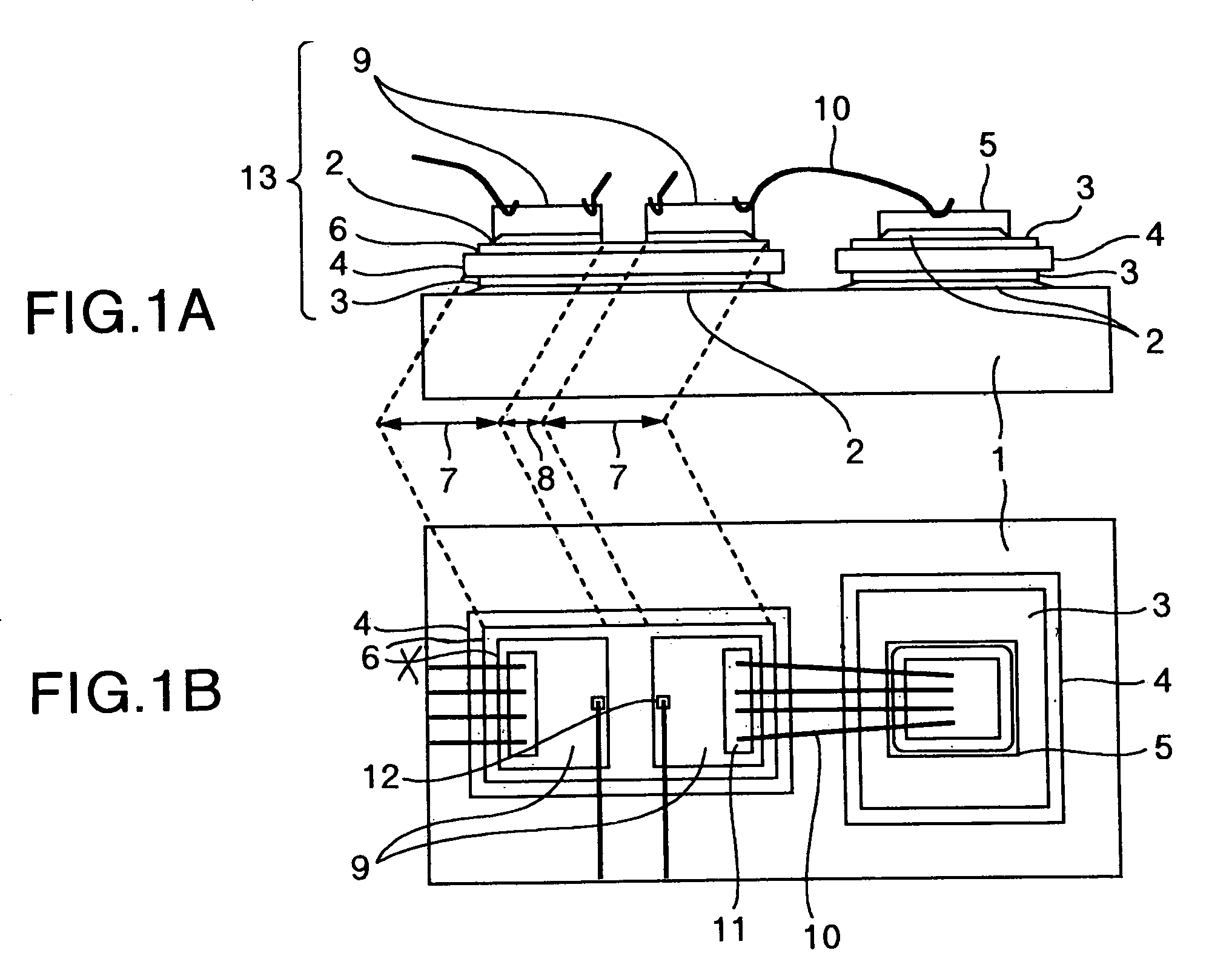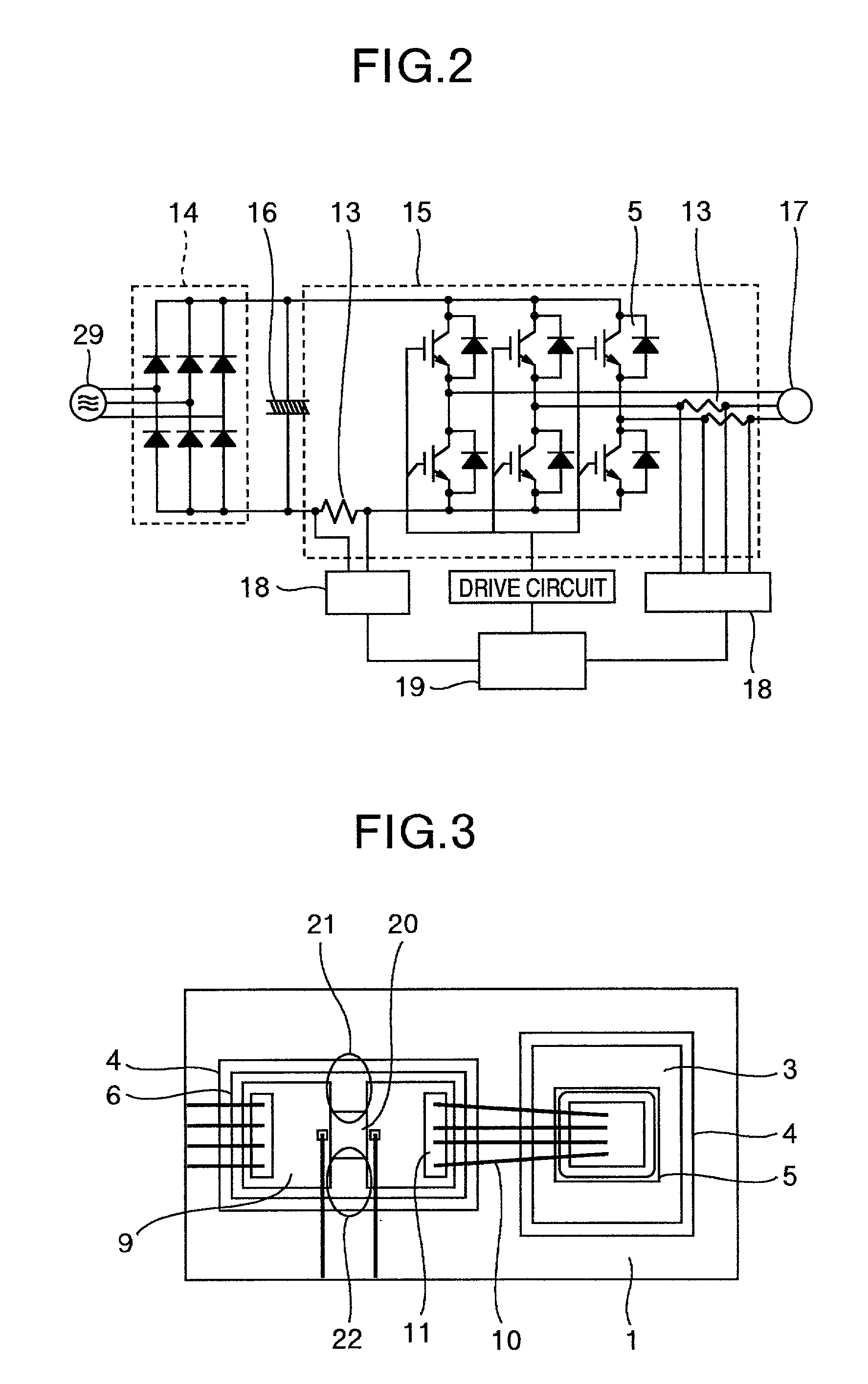Power converter with shunt resistor
a power converter and resistor technology, applied in the direction of resistor details, resistor housing/enclosement/embedding, one-port network, etc., can solve the problems of shunt resistor b>13/b> and the detection circuit b>18/b> cannot be made small in size, low resistance rate, cost reduction and miniaturization, etc. , to achieve the effect of suppressing heat generation, improving accuracy and low resistance ra
- Summary
- Abstract
- Description
- Claims
- Application Information
AI Technical Summary
Benefits of technology
Problems solved by technology
Method used
Image
Examples
second embodiment
[0045]FIG. 3 shows an example of a shunt resistor according to the invention. This embodiment is different from the embodiment described in FIG. 1 in the following point. That is, at least one branch port 20 for branching a load current is provided in the shunt resistance 8 in FIG. 1, and a plurality of shunt resistances 8 (first and second shunt resistances 21 and 22 in FIG. 3) separated by the branch portion 20 are connected in parallel through the plates 9.
[0046]Thus, the distribution of the load current is made uniform by the plates 9 and the load current is branched equally to the respective shunt resistances 8 so that heat generation in the respective shunt resistances 8 is made uniform. In addition, the first and second shunt resistances 21 and 22 are spaced so that heat generated in the respective shunt resistances is made easy to extend transversely. Thus, heat resistance can be reduced so that the temperature increase in the first and second shunt resistances 21 and 22 can...
third embodiment
[0047]FIG. 4 shows an example of a shunt resistor according to the invention. This embodiment is different from the embodiment described in FIG. 1 in the following point. That is, at least one constricted portion 23 is provided between each of the plate main electrodes 11 provided on the plates 9 and the shunt resistance 8 in FIG. 1.
[0048]Unevenness of an electric current in the wiring pattern in the power module or in a terminal block and aluminum wire wiring appears due to electromagnetic induction caused by mutual inductance among main circuit wiring of the power converter, the wiring pattern in the power module, the terminal block and the aluminum wire wiring, and the shunt resistor. Unevenness of an electric current also appears in the wiring and the shunt resistor in the layout where the wiring is bent sharply near the shunt resistor. However, when the constricted portion 23 is provided on the plate main electrode 11 between the plate main electrode 11 and the shunt resistance...
fourth embodiment
[0052]FIG. 5 shows an example of a shunt resistor according to the invention. This embodiment is different from the embodiment described in FIG. 4 in the following point. That is, at least one of the center positions of the constricted portions 23 provided in the plates 9 in FIG. 4 is shifted from the same straight line.
[0053]Thus, unevenness of an electric current appearing in respective wires due to electromagnetic induction caused by mutual inductance among the wiring in the power module and the shunt resistor, or unevenness of an electric current appearing in the wiring and the shunt resistor in the layout where the connection wiring is bent sharply near the shunt resistor is rectified by use of the respective constricted portions provided in the respective plates 9. In this case, for example, the center of a first constricted portion 241 prepared in a first plate 91 is disposed on the longitudinal center line of the shunt resistance 8 while a second constricted portion 242 prep...
PUM
 Login to View More
Login to View More Abstract
Description
Claims
Application Information
 Login to View More
Login to View More - R&D
- Intellectual Property
- Life Sciences
- Materials
- Tech Scout
- Unparalleled Data Quality
- Higher Quality Content
- 60% Fewer Hallucinations
Browse by: Latest US Patents, China's latest patents, Technical Efficacy Thesaurus, Application Domain, Technology Topic, Popular Technical Reports.
© 2025 PatSnap. All rights reserved.Legal|Privacy policy|Modern Slavery Act Transparency Statement|Sitemap|About US| Contact US: help@patsnap.com



